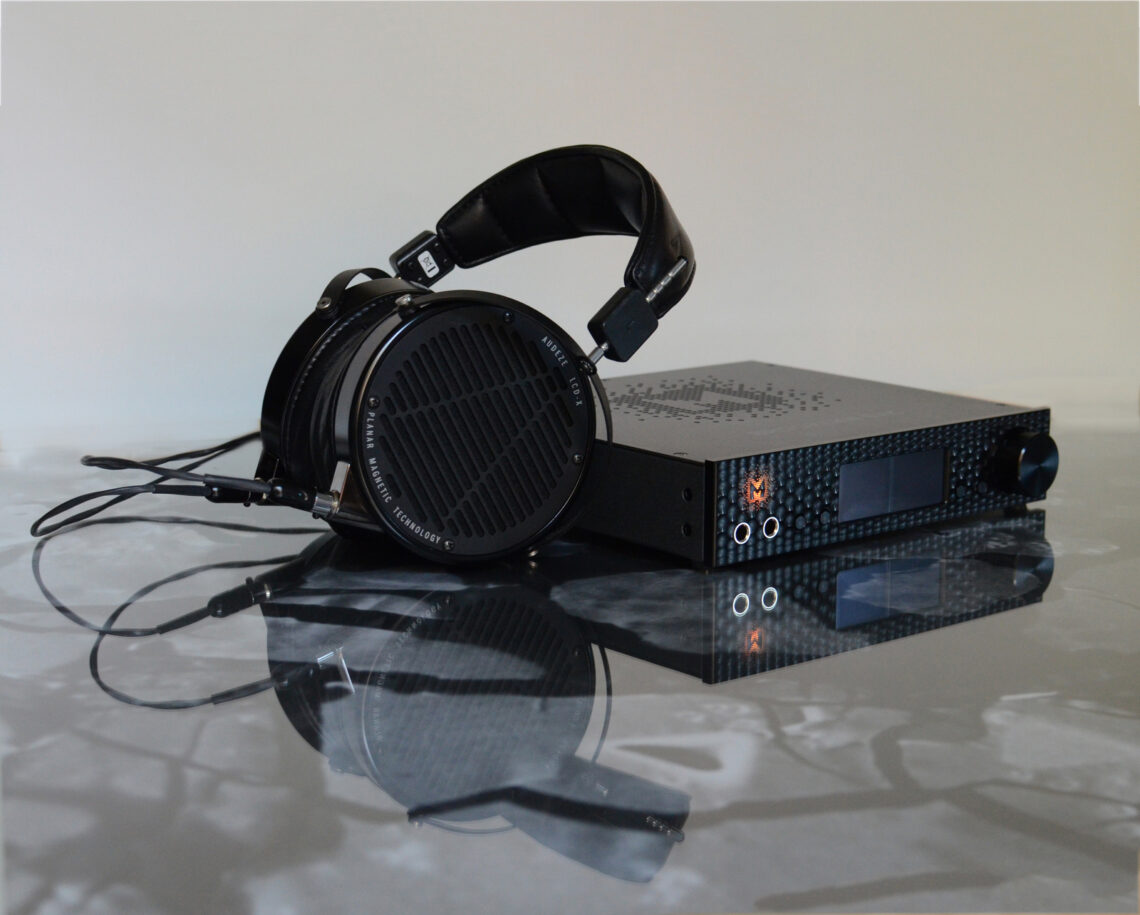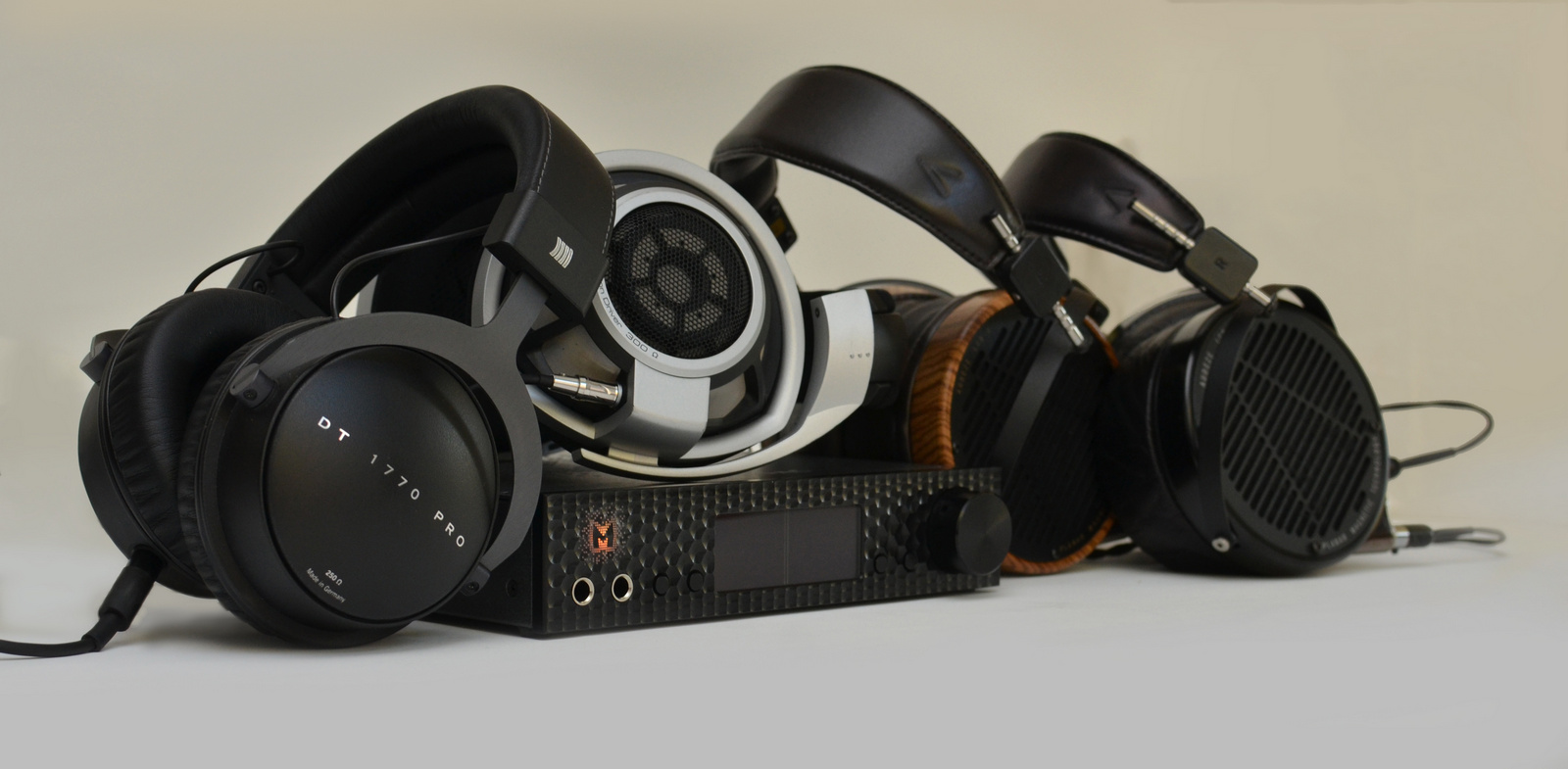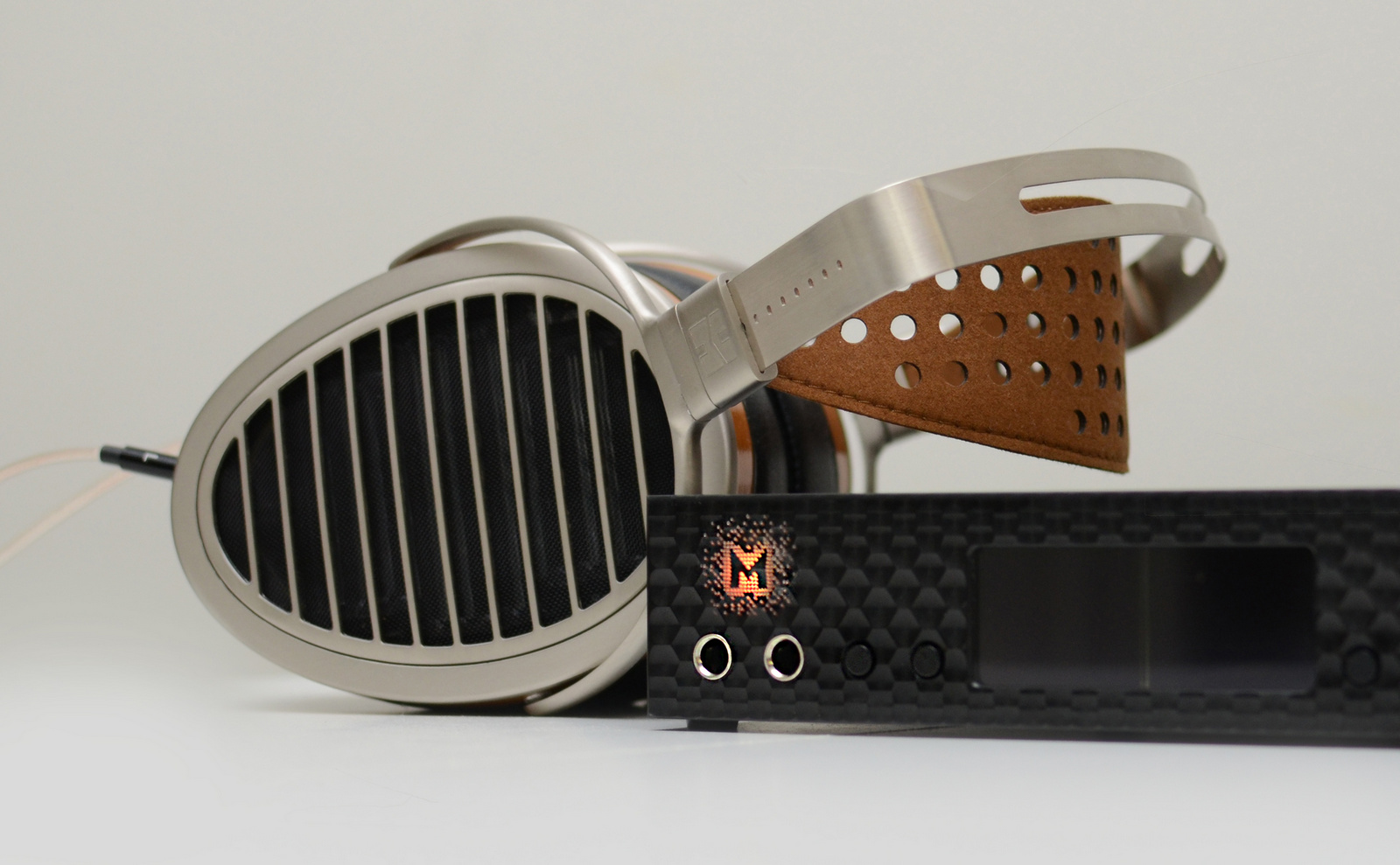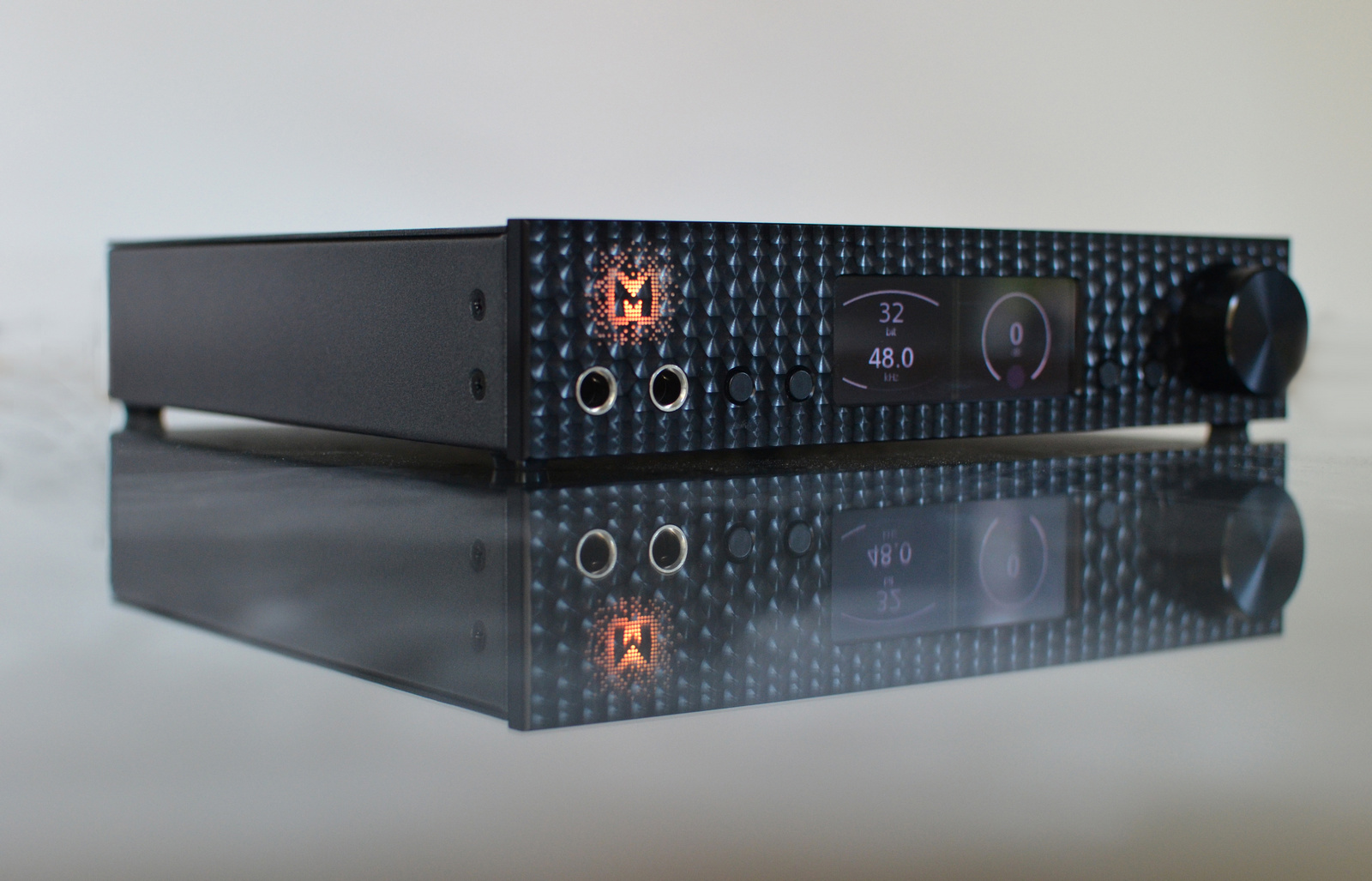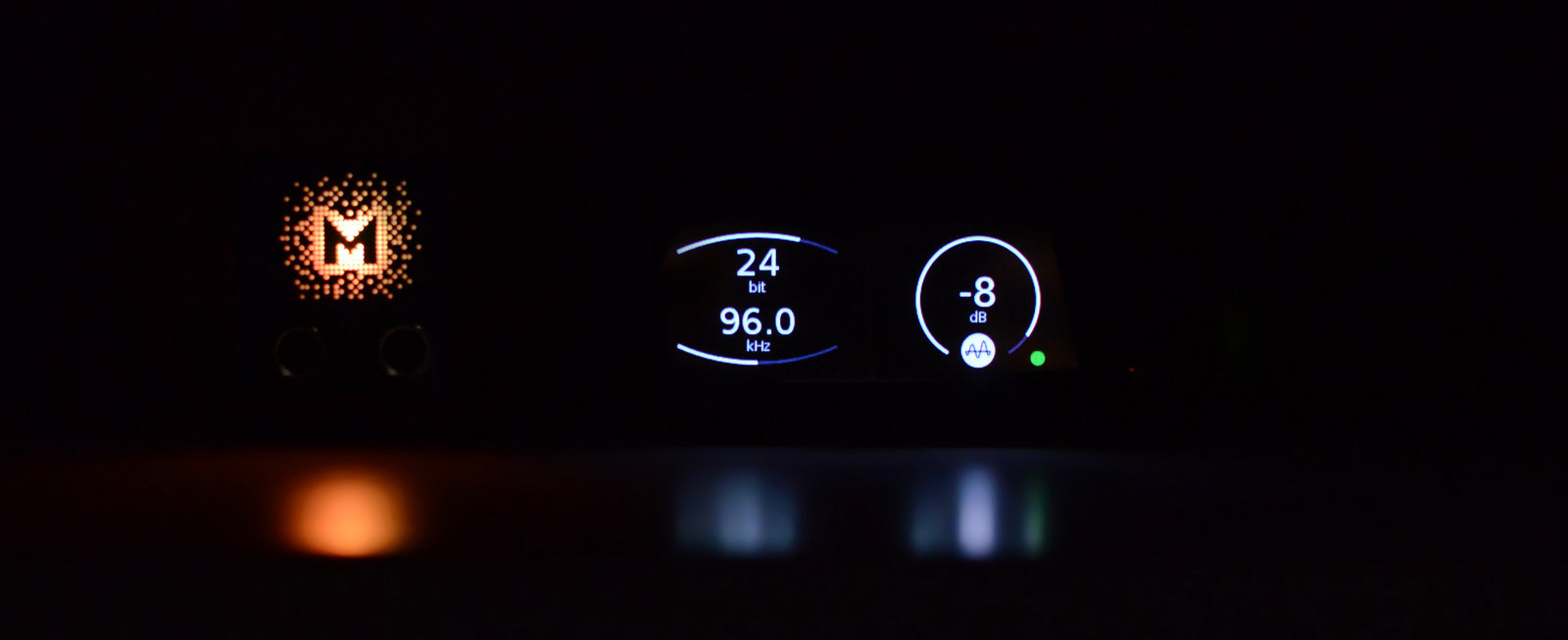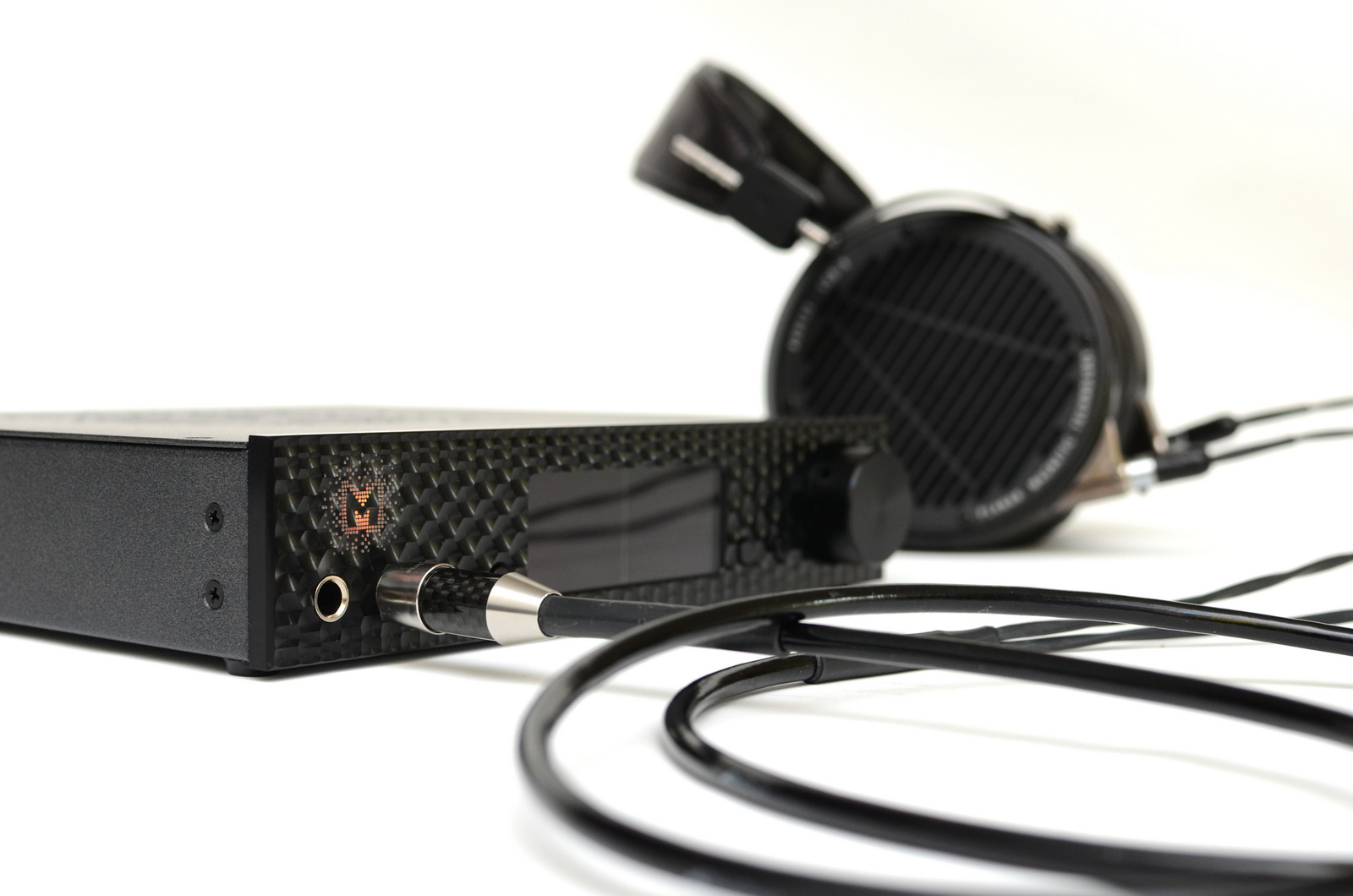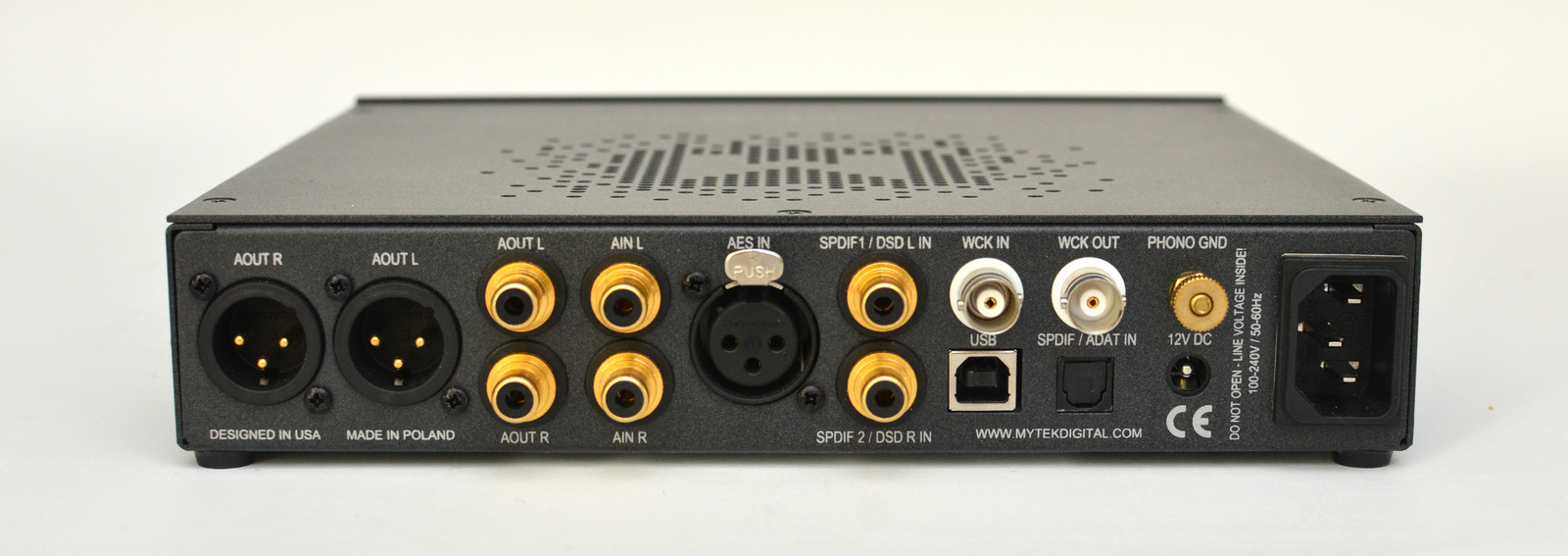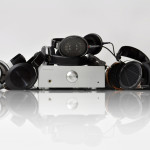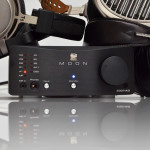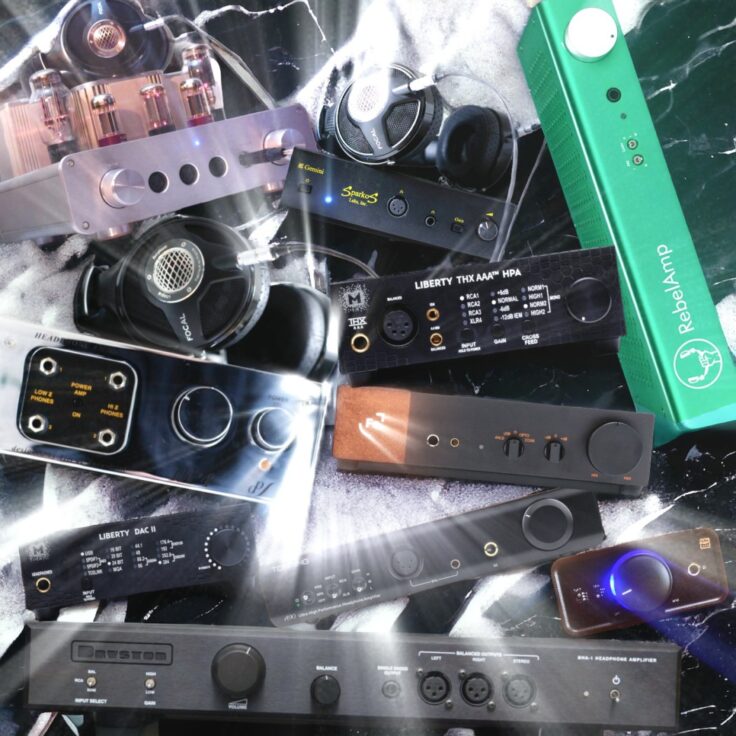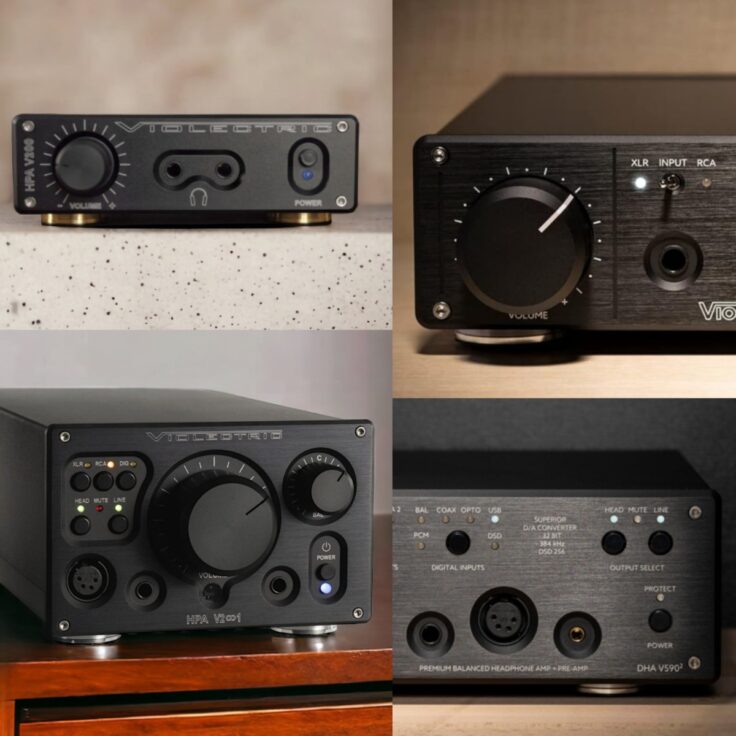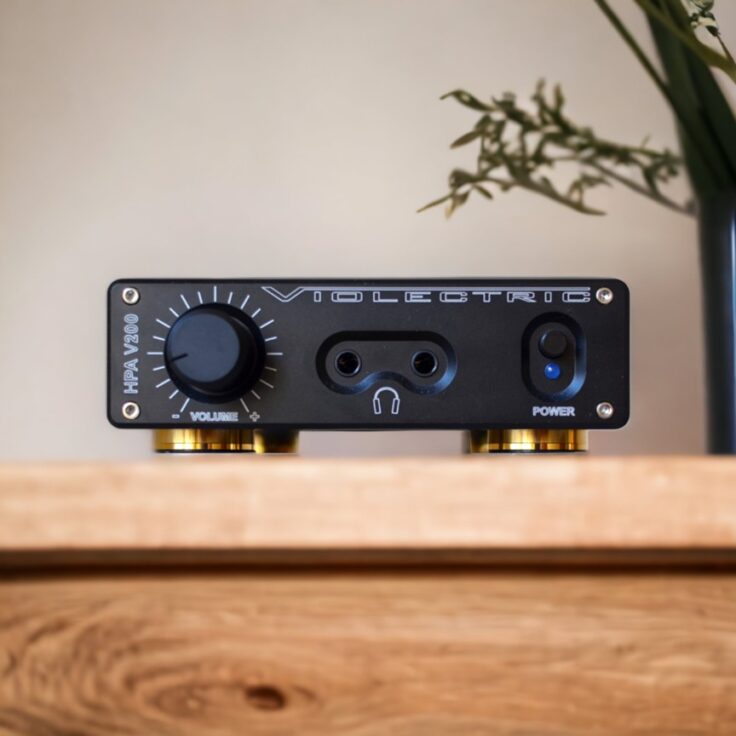The Mytek Brooklyn was launched in late 2015 as the little brother of the Mytek Manhattan, Mytek’s first real targeted take on the high end hi-fi market. The successor, the Brooklyn DAC+ was launched while this review was written, but the original version featured in this review will still be around for a while at a lower price than the newer version.
My first impression of the Mytek Brooklyn was very positive. That is, the first impression that came after my actual first impression, which was not so good because I couldn’t get any sound through the coax input, because the demo unit was set up as SDIF and not SPDIF. That taught me that this is as a professional device as much as it is a consumer DAC.
Anyway, my real first impression was great. I plugged in the Sennheiser HD800 and actually had a hard time believing that it was as great sounding as it was. I kept playing the same two albums for days. Eple Trio’s “5” and Prins Thomas’ “Edmond” were both so clear and open sounding, so detailed and tactile, textured and precise, dynamic and powerful, that I really was amazed.
This review is primarily a review of the Mytek Brooklyn as a dac/amp for headphones. I will of course cover the DAC part quite a bit, but other will cover that more in depth. As always, never trust my opinion alone. But here’s my take on the Mytek Brooklyn.
Technicalities
The Mytek Brooklyn is quite an advanced little thing, which is not surprising since Mytek so far mostly has been targeting the professional market.
Connectivity: The Brooklyn has great connectivity features: inputs are as follows: Analog input (which can be set up as a phono stage input for turntables), optical/Toslink, AES/EBU, USB, and two digital RCA inputs for SPDIF or SDIF. There is also a BNC word-clock in and out. There are RCA and XLR analog outputs, as well as a pair of ¼” headphone jacks. No digital outputs.
Display and operation: The display consists of two smaller OLED panels that works together as one screen. The screen has three modes: “Screen save”, “Menu Mode” which includes VU-meter and detailed information and menus, and “Simple Mode” which displays bit- and sampling rate, MQA status and volume. You can switch between the screen modes by pushing the volume knob or the remote. In menu mode you navigate with the help of four small buttons on the front panel and the big wheel. You can also use the remote control for all operation. A third option is to install the Mytek desktop app on your computer, which gives you access to all settings when connected via USB, although the user interface could need some work.
Remote control: You can choose to use the supplied Apple TV remote, or a RC-5 remote. I have only tried the Apple remote, and it worked great after I figured out the initial pairing process, which was described in the manual. When the Brooklyn is in the simple screen mode, it’s easy peasy. Up and down is for volume, left and right is rotating inputs, the “pause/play”-button is on and off, whilst “menu”-button gives you (unsurprisingly) the menu. Pressing the center remote button gives you the menu screen mode, and you navigate the menu and change settings easily with the remote. It’s a small screen, so you will have to stay close, but it is quite effective and when you learn the settings, you can toggle them from a couple of meters away without binoculars.
Brooklyn the Headphone Amplifier
– Mytek Brooklyn compared to the Violectric V200 and Trilogy 933
The first part of this review will focus on the Mytek Brooklyn as a headphone amp, and how it performs compared to two other reference headphone amps. First, the Violectric V200 is a well known allrounder and a long time favorite of mine in its price class. The Trilogy 933 is quite different, but a very interesting amp, at least if you don’t intend to drive the most power hungry planars. I will publish a review of the Trilogy in a separate post (link coming). I hooked up these two amps to the Brooklyn’s DAC outputs, in other words using the Brooklyn’s DAC as a source for all amplifiers, and started listening to a selection of music and headphones.
Sennheiser HD800
Azzahrat – Eple Trio: The 933 plays this Middle Eastern inspired song in a wonderful way. Lots of percussion and strings. Open, organic and full of body and tactility. Going to the Brooklyn things change quite a bit. It gets even more open, it gets tactile in a more microdynamic way – It sounds thinner but also a bit more accurate. But the 933 doesn’t feel less detailed. It is hard to explain, but they are quite different but equally good. Going from the Brooklyn to the V200 makes it clear that the 933 and V200 have something in common; both are fleshier sounding than the Brooklyn. In the end I prefer the Brooklyn for this track.
Montague Grant – Prins Thomas: Starting out with the Mytek, this rhythmic ‘bass and percussion’-intensive electronica track feels as tight and dynamic as can be. The drums have a delicious textural feeling. Going to the 933, there is this additional sense of something more organic. But there is less blackness around the instruments, they blend a bit more into each other. But both are great. The V200, is more like the 933 than the Mytek. It too is a bit fuller and slightly less pinpointed, but not as organic as the 933. So again it stands between the Brooklyn and the 933.
Aquela Mulher – Vinicius Cantuaria: They all sound good, but the Brooklyn feels a bit thin in the midrange. The V200 is slightly better, the 933 is definitely better. The organic touch of the 933 is really making a difference here.
Bergen Open – BMX: This is an airy, snappy and melodious jazz trio impro piece. Percussion feels especially snappy with the Mytek, the snare drums are very dynamic with a real sense of punchiness. Going to the V200, the piece is still very nicely rendered, but I don’t feel the snare has the same punch. The V200 feels a bit softer, more diffuse but at the same time less thin. Going to the 933, I get the best of them both – more dynamic and less diffuse than the V200, as snappy as the Mytek, but with more body. So the 933 wins here.
Overgrown – James Blake: The vocals are much more up front with the 933 than the Mytek, in a smooth and very nice way. The Mytek gets a bit thin sounding, but this is not a full sounding track to begin with. The V200 also sounds better than the Mytek, a bit fuller. Actually I might prefer the V200 altogether here. They are all nice and detailed, textured etc. The main difference is in the tonality.
Conclusion: The Mytek Brooklyn totally mesmerised me with it’s detailed, clean and dynamic presentation. As I mentioned before, I kept playing the two same albums over and over again for days with the Brooklyn and the HD800. With those albums I prefer the Brooklyn over the two other amps here. But when I broaden the scope, it becomes clear that the Mytek Brooklyn’s presentation can feel a bit thin and sterile with some productions. Maybe it is too clean. But it has detail and dynamics that really impressed me, and with well produced albums that are mixed to be played on neutral gear, it is great.
Audeze LCD-X
Close Your Eyes – Eple Trio: The Brooklyn is snappy with the opening drums, really impressive dynamics. The piano is clear as glass. But going to the V200, the tonality is a bit more satisfying. A bit more laid back, but still with lots of detail, punch and texture. It’s a matter of taste, and the difference isn’t that big anyway. Moving on to the 933, I find the same organic character that I enjoyed so much with the HD800. The Brooklyn might sound a bit cleaner, but the 933 is so delicious, it really gets my heart pounding a tiny bit faster.
One of These Days – Solveig Slettahjell: The bell ringing in the opening sounds a bit different on the Brooklyn vs the V200. It feels a bit clearer, with better “plankton” and texture with the Brooklyn. But when the vocals come in, I really prefer the smoother way of the V200. The Brooklyn might be more precise, though. Moving on to the 933, I again feel I somehow get a combination of the best from the two other amps.
Summer – Mogwai: The Mytek is very tidy, detailed and correct, but going to the 933 there is more fullness, body and warmth – without missing out on detail levels, texture etc. Going back and forth between the Mytek and the V200 I experience a similar effect, but the V200 is (again) not as organic and nice as the 933.
Conclusion: As with the HD800, I find consistent traits to differentiate the three amplifiers. I must note that they are all good. The Mytek is the one that gives you all the detail “in your face”, the V200 gives you a smoother experience, the 933 has this extra organic feeling that just kind of gives you the best of both and something more.
Mytek Brooklyn vs Trilogy 933 vs Auralic Taurus with Beyerdynamic T1 mk2
I start out listening to the toned down experimental “Phosphorescence” album from wonderful and mysterious Dans Les Arbes. It sounds wonderful on the T1 when I start out with the 933. And it sounds wonderful on the Mytek. But I realize I need more action in the music to really get something to write about.
Montague Grant – Prins Thomas: This was great with the HD800 on the Mytek. And again it is ultra clean with a stunning amount of detail and texture, whilst the 933 feels a tad fuller and smoother. Bass feels a bit tighter on the Mytek. Introducing the Auralic Taurus, I feel it performs slightly better than the Mytek at the Mytek’s strong sides, being very detailed in its presentation. At the same time, it has some extra warmth and punch. Going back to the 933 from the Taurus however, I found that the differences are not big. They are all very good. I have a feeling that the Mytek is somewhat brighter, though.
He Would Have Laughed – Deerhunter: This track is one of my favorites for the T1, somehow, I enjoy it so much more with the T1 than any other headphone. It has a repetitive melody, drums and vocals, and the instruments and voices are a bit distorted. It needs precision and some warmth to sound great. Starting with the Taurus I immediately get that good feeling. Moving to the Mytek, I expect the sound to get a bit more sterile, but the opposite happens. My first impression is that it feels a tad warmer in the mids and is even more enjoyable, it is dynamic, punchy, and precise. Going on to the 933 things gets slightly softer and smoother. But after some back and forth, there are only minor differences to the sound quality. I can’t really say that the Mytek is warmer than the Taurus. But I can say that I enjoy all three.
DAC/AMP Comparison 1:
Mytek Brooklyn vs Moon 230HAD
The only similarly priced one-box dac/amp I have available is the Moon 230HAD, about which I am also writing a review (link coming). It’s in the same price range as the Brooklyn, but is marketed more as a headphone amplifier with a DAC, rather than a DAC with a headphone amplifier.
Remarks: Both DAC’s connected in parallel through spdif/coax from the W4S Remedy reclocker.
HD650
I found the Moon to be a stellar amp for the HD650, and start out by giving the Mytek the “disadvantage” of meeting the Moon’s stronger side. I connect the Mytek to the analog input of the Moon, for easy comparison of the DAC’s as well as the headphone amps.
Be Free – Polar Bear: Such a great tune, rom a great album. Makes me happy every time. And indeed it sounds fabulous on the Moon. Going to the Mytek immediately makes it less fun. More details, but the feeling changes. The sound is thinner and the wonderful midrange and mid-bass from the Moon is lost. The Mytek sounds good, but totally different. Dynamic and precise, but in a ‘studio monitor’ way. With the Moon things come more to life.
Comparing the built in DAC of the Moon to the Mytek connected to the analog input of the Moon, reveals that the Brooklyn definitely has the upper hand when it comes to the dac. It is cleaner and clearer, simply put just better.
Floratone – Floratone: It is the same thing here, maybe not as pronounced, but the Moon is more engaging. The Mytek more precise. Using the Mytek DAC on the Moon amp is again, unsurprisingly, the best combination.
Mozart: Violin Concerto No.5 In A, K.219 – 1. Allegro aperto – Hilary Hahn: Also with Mozart and the great violin play of Hilary Hahn, the Moon has more soul and body, despite the inferior DAC. But for max pleasure I again prefer the Mytek feeding the Moon, although the Moon DAC’s fatter signature has its appeal sometimes.
Conclusion: As a standalone unit for the HD650 I prefer the Moon despite its inferior DAC. But the Mytek still is a good amp with the HD650 – if you think the HD650 should sound more like the HD600. You might even prefer it. As DAC’s there is no comparison in favor of the Mytek – but the Moon is getting the job done.
Oppo PM-1
Mozart: Violin Concerto No.4 In D Minor, Op.31 – 3. Scherzo – Hilary Hahn: I really prefer the fuller sound of the Moon – the Mytek does nothing wrong and has the ability to drive the Oppo very dynamically and with control, but compared to the Moon the amplifier is not as engaging.
Big Nothing – Big Nothing: All through this indie rock EP things are pretty consistent. When the music is simple – vocals and easy going band – I prefer the Moon. When things get busy, I prefer the Mytek. And the Mytek dac with the Moon amp is the best.
Lost – Frank Ocean: Starting with the Mytek, the bass line is tight, deep and punchy. Vocals are clear and textured. It sounds very open. The Moon is warmer and less clear, as usual. I love vocals on the Moon, but I guess the tightness of the Mytek is equally appealing.
Conclusion: Basically, the Moon is warmer, nicer with vocals and more enveloping as an amplifier, the Mytek cleaner and more “neutral” or “clinical”, depending on what you prefer. The Mytek DAC is better, but as a standalone unit for the Oppo PM-1 they are equally nice, but different.
HE-1000
Another great headphone for the Moon, and I am curious how the Mytek holds up.
Pink Matter – Frank Ocean: This one sounds great with both. The Mytek has no problem driving the HE1000, it is super tight. Lots of detail and texture. Bass is deep, dynamic and controlled. Imaging great. The Moon, as always, excels with the midrange smoothness. Otherwise it is a bit more fuzzy, most of it due to the inferior internal DAC. When I switch the Moon to external input, its like… flipping a clarity-switch. The Moon is very enjoyable by itself, by all means, but DAC-wise, the Mytek is just another beast.
Garage – The Thing: “The Thing” calls themselves “The Thing” for a reason. Go see this wild beast of a jazz improv trio if you dare.. The acoustic bass in the opening is deliciously organic sounding on the Mytek. It is good with the Moon too, but the tidy control of the Mytek, both the amp and the DAC, has its clear advantage. I run through some more from the same ensemble, and find the Mytek’s tidiness appealing.
Futurum Exactum – Cikada String Quartet/Oslo Sinfonietta: Contemporary string music isn’t my main thing, but sometimes it is fun to hear how much noise you can generate from violins, violas and cellos. I somehow expected this noise to sound better with the tidy Mytek, but found it a lot more pleasurable with the Moon.
Where is my Mind – Maxcene Cyrin: Oh, my – this simple piano adaption of the Pixies classic makes me want to shed a tear every time, and I am probably not alone – I guess this track was featured in the tv-series Mr.Robot and The Leftovers for that very reason. And the Mytek certainly doesn’t make me appreciate it less than before. But again, moving over to the Moon – that extra warmth is sooo nice, even though it misses out on some of the fine detail. And, as before – the Moon gets better with the Mytek as a source.
Conclusion: I really like the HE1000 with the Mytek. Even though I often prefer the Moon as an amplifier for its usually warmer tone, after running through some of my playlists I can conclude that the Mytek as a standalone dac/amp certainly is a great option.
HD800
My first impression of the Mytek was immensely positive, and the HD800 was the headphone I used. I’ll start out with a couple of tracks from the magic albums I listened to:
Alea – Eple Trio: Wow. Plugging in the HD800 really makes me wonder if Mytek made the Brooklyn especially for this. It is so detailed , airy and precise – without that harshness that often plagues the HD800 with “clinical” amps. The dynamics are staggering, even in this quiet little jazz trio tune. Going to the Moon, it is still a great listen, but some of the magic is lost. It is not as dynamic, not as detailed, a bit more fuzzy. To a certain degree it is compensated by the extra warmth, but it is definitely more fascinating to listen to this track with the Brooklyn.
Azzahrat – Eple Trio: Another song from the same album, similar preferences. When I run the Mytek as a source for the Moon, the gap narrows. I still tend prefer the Mytek on its own, but now it is very close.
Montague Grant – Prins Thomas: The drums are so much more satisfying on the Mytek, more texture and dynamics. Otherwise same as above.
Never Forget the Good Ones – Solveig Slettahjell: The female slow vocals sound good on the Mytek, but the Moon nonetheless takes this one home easy. The smooth trumpet is just too delicious.
The HD800 sounds great with the Mytek, but there are warmer amps out there. Sometimes it is exceptional, sometimes it gets a bit clinical. It excels with complexity, the Moon excels with songs that favor warmth and smoothness. But I didn’t experience the Mytek as fatiguing at all, a relevant observation especially since many amps with similar sound signature can become a bit unfriendly with the HD800.
Moon 230HAD vs Mytek Brooklyn – Conclusion
The Mytek Brooklyn is a DAC with an amp. The Moon 230HAD is an amp with a DAC. And that is how they sound. They Mytek is a superior DAC. As an amp it is very capable; dynamic, precise, clean and tidy. What the Moon has that the Brooklyn doesn’t, is that midrange sweetness and warmth, that enveloping sense of flow. The Mytek is much more functionally advanced – but at the same time a bit more complicated to use. The regular audiophile will have no problems, but their household members might.
DAC/AMP Comparison 2:
Mytek Brooklyn vs V200/V800
Although the Violectric V200 and V800 isn’t a one box solution, they are made to stack nicely, they are made to compliment each other and are in the price range of the Mytek Brooklyn – thus i find them a relevant comparison. And most importantly – they are in my possession at the time of this review.
Remarks: Both DAC’s connected in parallel through spdif/coax from the W4S Remedy reclocker.
Hifiman HE-1000
Montague Grant – Prins Thomas: The Mytek has shown to have a special synergy with this track, and it still has. The HE-1000 is punchy, tight and really engaging. Going over to the Violectric rig, things gets a bit more diffuse and less dynamic. Still good, but this one goes to the Brooklyn.
Azzaharat – Eple Trio: Starting out with the Violectric rig, things are sounding good, but moving over to the Brooklyn, it becomes even more vibrant and dynamic, cleaner without sounding sterile.
Seven Deadlies – Martin & Wood: Very vibrant and spacious sound from the Mytek. The Violectric stack is not bad, but not quite up there.
Easier – Grizzly Bear: Again, the Mytek sounds cleaner, faster and more dynamic.
Sennheiser HD800
Easier – Grizzly Bear: I always liked the V200 with the HD800, and it certainly performs well here together with the V800 DAC. Now it is the Mytek that sounds a bit less spacious and dynamic. Detail level feels similar.
Azzaharat – Eple Trio: The preferences shift with this song. There is something with those drums that the Mytek just has a magic touch with – especially with the HD800
Montague Grant – Prins Thomas: Basically the same here as with the previous song. The drums are truly fabulous with the Mytek.
Three Madrigals for Violin and Viola Op.H 313 – Martinů/Emerson String Quartet: Wow, the difference between the two setups becomes very, very clear with this nice little string piece. They both sound great, but in such different ways. The Brooklyn gives me all the texture and tone from the strings themselves, while the Violectric rig makes me, to a much higher degree, hear the resonance from the body of the violins and violas. The tonality of the Violectric rig is more laid back and smoother without leaving anything out, really. The Brooklyn is more aggressive sounding, but still very enjoyable.
Fostex TH-900
With the Brooklyn I get a small hiss. This is not abnormal for the HT900, because it is very sensitive. The hiss is just noticeable with no music, but no the less, I would not get the TH900 for the Brooklyn. I try out a few tracks that I know the Brooklyn has excelled with before – but the Violectric rig sounds better, even if I ignore the hiss. There is this ability to give a deeper sense of space that the Violectric rig often gives me. No matter how correct the Brooklyn sounds, it sometimes has more of a left/right presentation than the comparison, and not only with the TH-900.
Remarks: I used the TH-900 mk1 version, but the mk2 just has a new detachable cable and is otherwise the same.
LCD-X
Montague Grant – Prins Thomas: This track, which usually sounds soo good with the Mytek, indeed sounds very good. The Violectric stack is also great, but the Mytek is tighter and feels more precise, and the bass is so deliciously full and punchy.
Azzaharat – Eple Trio: Same thing here as above, the Brooklyn is great. It comes off as tighter and brighter, but not brighter in a bad way to my ears. The difference in voicing is quite significant.
Compare Manuel – Vincente Amigo: This is such a great piece of flamenco guitar music. Here the Mytek doesn’t sound brighter than the Violectric at all. It does however come out as cleaner, but it is hard to pick a winner – I like them both, but they are not the same.
Dualist – Ola Kvernberg: This track starts with a single steel string, then it escalates with more and more strings and percussion joining forces. When the bass kicks in at 40 seconds, the Violectric rig feels so much fuller, the bass is more alive and rumbling, in a much more entertaining way. Is the Mytek more neutral? Maybe. But the Violectric is more fun.
All in all, I find both the combinations very good with the LCD-X, but they are different, and not always in the way I expect. It would be wrong to say that the Mytek is brighter, because it is not always the case. It depends on the track. But the Mytek feels a bit cleaner and tighter, the Violectric rig a bit smoother and darker, sometimes resulting in a better sense of image depth.
HD650
I always found the HD650 good with the V200, but it sometimes strikes me as a tiny bit diffuse in comparison to the best HD650-amps. And sure enough, in comparison to the Violectric stack, the Brooklyn is more focused. I listen to most of the new album from Fleet Foxes, “Crack-Up”, and though the Violectric rig has a very appealing laid back, smooth and enveloping charm, I prefer the clarity and focus of the Brooklyn.
I also listen to some the classical chamber music (Interactions by Bård Monsen, Fartein Valen, Stravinsky and Lutoslawski, all strings and piano) and with that recording I am never in doubt: The HD650 has better clarity, separation and dynamics with the Brooklyn, the Violectric rig just gets a bit duller in comparison. Totally enjoyable, but you know – in comparison. I run through a couple of more tracks, and my conclusion is that the Brooklyn is preferred overall, but that the Violectric rig sometimes has its moments of delicious envelopment.
Hifiman HE-6
I won’t spend much time on this, but it is always interesting to check out how an amplifier drives the notoriously hard to drive HE-6. Unfortunately, I did not have access to the balanced output adapter, which I guess will increase the power output. Mytek isn’t very informative on that point. I compare it briefly to the V200 (at +12 gain) and the Audio-gd Master 9. The Mytek holds up remarkably well.
As many other HE-6 fans, I prefer the HE-6 with a suitable speaker amp – I currently have it hooked up to the Cary SLI-80 – but the Master 9 is quite good IMO, and the V200 isn’t bad either. The Brooklyn is a bit brighter but not harsh or unpleasant. If the Brooklyn was my only amp I still would take my HE-6 for a ride, to put it that way.
Even if I don’t really imagine any HE-6 enthusiasts going for the Brooklyn as a primary amp, it is indeed very interesting that the Brooklyn actually does such a good job. I don’t have the new Hifiman Susvara or the power hungry LCD-4 at hand, but they might sound just fine – but I would definitely use the balanced adapter.
Audeze LCD-3
Bad Business – Little Hurricane: The Brooklyn plays lovely with the LCD-3’s. It’s punchy, full and clear. With the Violectric rig, things get a bit thicker. Still good – but I like the Brooklyn better.
Never Forget The Good Ones – Solveig Slettahjell: The Mytek is a bit crisper, but this smooth song still feels smooth. They have a bit different tonality, but feels equally enjoyable.
Ragged Wood – Fleet Foxes: I think the Brooklyn comes off a bit cleaner and less fuzzy here, and prefer it.
Dualist – Ola Kvernberg: As with the LCD-X, this track is more satisfying with the fuller sounding Violectric rig.
Remarks: The LCD-3 used is the 45 ohm version.
Beyerdynamic DT1770PRO
Dualist – Ola Kvernberg: Plugging the DT1770PRO into the Mytek immediately gives me a good vibe. It is crisp and clear, alive and dynamic. The bass drums that soon kicks in are full and massive sounding. Going to the Violectric rig, it is not equally crisp, clear and punchy.
Sanzhi Pod City – Hauschka: Both amps are great with the DT1770PRO. Detailed, crisp and dynamic. But they have different tonality . the Brooklyn feels lighter, the Violectric a bit fuller.
Almost like the Blues – Leonard Cohen: There is something that makes the voice of Leonard Cohen sound a bit more natural, or at least more enjoyable with the Violectric rig with this song.
In conclusion, I can say that Both rigs play great with the DT1770PRO.
Mytek Brooklyn – DAC Performance
Testing a DAC in the proper way includes real technical tests. I am not doing that, but I will use my only available testing tools – my ears. And I will tell when I am not able to tell the difference. Generally that is a phrase I seldom see in reviews: “I couldn’t tell them apart”. Take it for what it is. Further, I am not going through a full test of the difference between all the inputs in combinations with different digital sources. Mostly, I use the coax/spdif in parallel for easy direct comparison, but I will also check out the Mytek via USB and its MQA capabilities.
Mytek Brooklyn vs Audio-gd Master 7
The Master 7 is my best DAC. So I will use several setups to do some a/b side-by-side comparison.
– Setup 1: Trilogy 933 with LCD-X
I run three or four songs switching back and forth with a depressing feeling of not being able to tell the DACs apart. But finally James Blake comes to the rescue, and i get something to write about:
Owergrown – James Blake: The Brooklyn feels a bit more revealing, with more reverb, Blake’s vocals are a bit less full, a tad more fragile sounding, there is a bit more brittleness to the tone. The bass sometimes has some more bloom with the Master 7. The differences are not very obvious, but they are there.
858-3 – Bill Frisell: I play this untraditional “string quartet” repetitively in order to find significant differences I can confidently write about. If anything, the Master 7 comes out a tiny tad fatter and fuller, the Brooklyn might be a tiny tad more revealing. But I wouldn’t bet much on a blind test challenge.
Spontanious Compositorius – Thomas Agergaard: The melodious saxophone, acoustic bass and the quite varied percussion on this track sound great, but quite similar. I think the bells and scrap metal (or whatever the percussionist is using) have a small tendency to sound a bit more brittle with the Mytek. Still, I think I might prefer the Master 7 here, if anything – it’s more like a small hunch than a real preference.
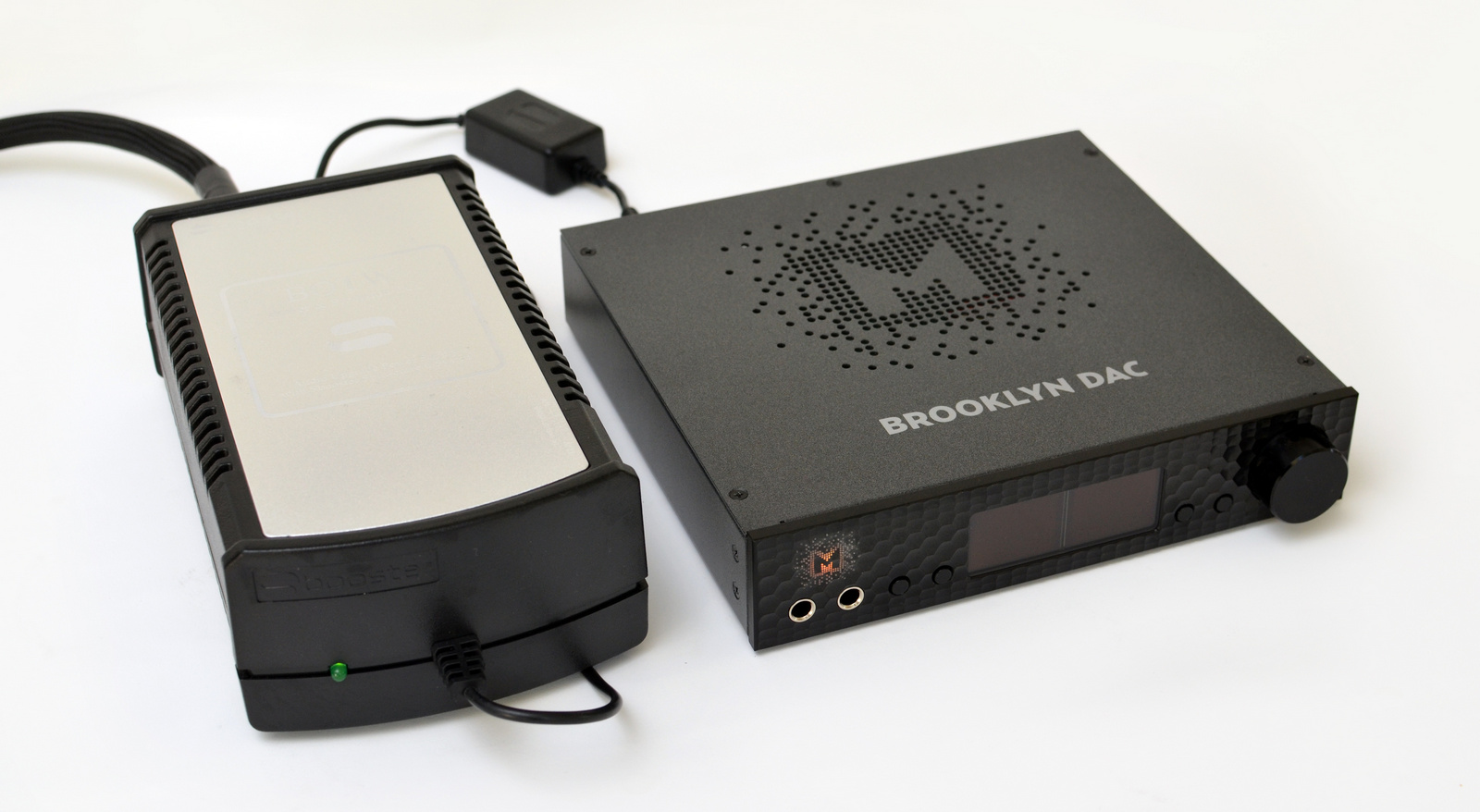
– Setup 2: Audio-gd Master 9 with HD800
I get my kid to plug in the cables to the Master 9, so I do not know which is which. Cables are identical, both are via XLR. It’s time for a short blind. I try four songs. With three of them I am quite certain which is which, with one I am more uncertain. But turns out I am right all four times. The few times I actually do blind testing, I tend to be amazed that it is often easier to tell things apart blind than not. So, after I have assured myself and my readers that I actually can hear the difference between the two DACs, I have to move on to what sets them apart. And the best way is to go through the songs I used in my little blind test.
I actually ended up doing this session twice. First with the built in power supply, later with a 12V SBoooster BOTW power supply unit. I tested the Mytek vs the Master 7 first, using the in-built PSU, then a new comparison with the SBooster using the same tracks and comparing to my memory and my notes. This is of course not ideal, I would much rather have two Brooklyn DACs, running them with different power supplies. But I didn’t – so take it for what it is.
Violin Concerto in D Minor, RV 813: III. Allegro – Adagio – The Young Vivaldi: There is a sense of denseness to the strings on the Master 7 that the Brooklyn has to a lesser degree. The Brooklyn has a tad more of that dry textured feeling to the strings. Not much difference in an absolute sense, but noticeable.
- With SBooster: The Brooklyn sounds a tad cleaner than I remember it from the comparison without the SBooster, but hard to tell. I still feel these DACs are on the same level, but different.
Sue – David Bowie: The drums and bass in the opening has a bit more of that open, slightly drier texture with the Brooklyn. Bowies voice too, for that matter. The Master 7 is a bit fuller. They feel equally detailed, but the Master 7 has a rounded texture to the timbre.
- With SBooster: The Brooklyn feels more detailed and clearer than before,. The Master 7 still has that comparative advantage with regards to fullness, but that will be a matter of taste.
Mississippi Ringing – Floratone: This was the one I was most uncertain about when blind. But the tendency is the same here as well. The Master 7 is a bit meatier. But they are close enough that I had problems telling them apart blind.
- With SBooster: The Brooklyn has some more detail and crispness, and again seems more detailed and cleaner than in the comparison using the internal PSU. To double check, I switch back to the internal PSU, compares a bit, and then goes back to the SBooster. It becomes clear that the differences between with or without the SBooster is subtle, and I really have a hard time being very conclusive without getting another Brooklyn to compare with side by side.
Cite Tango – Gotan Project: Again, the Brooklyn is a bit drier, and brings more attention to texture and space, whilst the Master 7 puts the tone and body of each instrument and sound a bit more up front. The space between instruments and individual sounds seems very similar. They both are clean, focused and delicate.
- With Sbooster: The Brooklyn is clearer and has better separation, it is crisper. The Master 7 is more rounded, yet still full of detail and neuance. The Brooklyn seems technically better, the Master 7 has a smoother tonality.
Conclusion: In this setup, i find them to be slightly different flavors. The Master 7 gives the body to the tone, the brooklyn exposes their brittleness. Both are musical and gives immense detail, great imaging and are highly enjoyable. Neither feels bright, dark or tonally skewed. They play the same song, so to speak. The SBooster power supply makes the Brooklyn a tad better than when using the internal PSU.
– Setup 3: Master 9 with Hifiman HE-1000
Mi Declaracion – Vinicius Cantuaria: I hear the same, as above, a slight tendency that the Brooklyn has a drier, but also more apparent texture. The vocals come off a bit less full. The light percussion in the background sounds a bit crisper on the Brooklyn. The bass a tad drier too, with a bit less weight.
Ragged Wood – Fleet Foxes: The Brooklyn is a tad crisper and drier sounding, again. I feel the separation is very similar, but the difference is about tonality
– Setup 4: Master 9 with LCD-3
Joey’s Spring – BMX: This lively jazz impro trio gets your toe tapping. The trumpet is a bit more brittle with the Brooklyn, the texture a bit more obvious. Again, I feel all the detail is there with the Master 7 too, just in a smoother way.
My Name Is Liar – Highasakite: This female vocals and electronics quite busy song DACs are very clean and tidy, the difference is in the tone, similar to described before.
– Setup 5: Trilogy 933 with HD800
Violin Concerto in D Minor, RV 813: III. Allegro – Adagio – The Young Vivaldi: Maybe it is the 933’s own fabulous way of making music sound warm and organic, but it seems harder to tell the DACs apart with the 933 than when I used the Master 9.
Cite Tango – Gotan Project: I really struggle to tell them apart hear.
I try out a few more songs and have to admit to my shortcomings, not being able to tell them significantly apart in this setup.
Mytek Brooklyn vs Violectric V800
The other DAC I chose to compare the Brooklyn to is the Violectric V800. It is not the newest DAC around, but is still in production and still holds up to many. It is also quite a bit less expensive than the Brooklyn, close to half the price, but it also has less functionality and no headphone output. I fed both through the coax input in parallel from the W4S Remedy for this comparison.
In this comparison I also experimented a bit with power cables and the SBooster power supply, which I have added as side notes.
Setup 1 – Audio-gd Master 9 with HE-1000
Fields of Home – Eple Trio: They both sound good, but the V800 tends to feel a tad flatter, a bit less alive. There is a bit more detail and texture with the Mytek. It feels more dynamic. Especially noticeable with the percussion, more texture and tactility.
Mi Declaration – Vinicius Cantuaria: Same thing here. The differences aren’t enormous, but the Mytek is a bit more dynamic, has a bit more detail, but the V800 has this smoothness to the male vocals that is really nice.
Never Forget The Good Ones – Solveig Slettahjell: Again, the Brooklyn is clearer with better separation and texture, whilst the V800 has this charming creaminess with the female vocals.
Setup 2 – Audio-gd Master 9 with HD800
I actually did the below comparison three times in order to investigate the effect of power cables and an external PSU. The first round was with an unbranded, cheap power cord connected to the Mytek, second time with one of my fancy pancy Nordost Shiva (the V800 had a Shiva cable all the time). I have not included my notes on the differences between the cheap and he fancy power cord, but to me The Mytek seemed quite a lot better with the Shiva, it was easier to identify the differences between the two DACs. The third round of comparison I used the SBooster PSU for the Mytek.
Below are my notes from the comparison between the V800 and the Mytek with the fancy power cable, as well as my comments after comparing the Brooklyn to the V800 with the SBooster. As mentioned before – this is not ideal – but I didn’t have two Myteks to play around with. Aa always – take it for what it is.
Ragged Wood – Fleet Foxes: The Mytek feels more dynamic and vibrant with the HD800 too. The guitar strings are a bit crisper, vocals are a bit clearer. The V800 is still good, though, and has this sense of smoothness that certainly has a great deal of appeal.
- With SBooster After I switched to the SBooster, the Mytek seems to move farther ahead in sonic performance in comparison to the V800. Cleaner, clearer, better separation. The V800 feels a bit crowded and diffuse in direct comparison.
It Should Be Obvious – Jørn Øien Trio: There is more detail and nuance with the Mytek. The V800 is a bit softer and feels a bit more laid back. It is not a day and night difference at all, but there is no doubt they are different. The V800 is a bit darker and fleshier, maybeI should call it a bit silky. The Brooklyn has sharper edges and more detail.
- With SBooster The Brooklyn is definitely tighter than the V800. The bass has more definition, there is more dynamic attack. Also here, the difference feels a bit bigger than with the internal PSU.
Chubb Sub – Medeski, Martin and Woods: Somehow, the bass feels more full and satisfying with the V800. The Brooklyn feels lighter, with better texture and a bit more attack.
- With Sbooster: I believe the distance to the V800 increased even a bit more. Maybe not by much, but the Brooklyn feels markedly clearer.
Conclusion: In comparison to the V800, the Mytek Brooklyn offers better resolution, a more up front and engaging sound and a slightly brighter presentation.
I found that going from a cheap power cord to the Nordost cable, the differences between the Mytek and the V800 became more obvious, and even more so when I went from using the internal PSU to the Sbooster. So, to conclude – the Mytek seems to be sensitive to various power cables as well as to using an external 12V PSU of good quality.
MQA and Digital Inputs
Reviewing the Brooklyn brings up the confusing matters of MQA files. It stands for “Master Quality Authenticated” and is interesting because it opens up for streaming compressed high resolution files over the internet. In other words: High resolution files can now be streamed from Tidal (and more to come) with the same convenience as CD-quality files. Great stuff. But MQA is also a bit controversial. First, it is not an open standard (as opposed to FLAC) – which implies potential licensing fees along the whole chain of encoding, streaming and decoding. Second, since it is not an open standard, few actually know what is going on inside the coding process, and many are naturally sceptical. There are lots of writing about this around the web. I will not even begin to try to recapitulate that here, it simply is not my field of expertise. I will stay focused on the Brooklyn, but a tiny introduction is in its place.
An MQA file can be played in four ways:
- As an undecoded file, which in Tidal is in 24/48 resolution. In other words, non-licenced music software can play a MQA file, but cannot decode the high resolution version. To play the high resolution version, the decoding process has to “unfold” this audio file and extract hidden information.
- As a software decoded file, which will be decoded to max 24/96. Software decoders are now included in Tidal, Audirvana and Roon (and more will come)
- As a hardware decoded file at max 24/192.
- As a combination of software and hardware decoding.
To get the MQA file to your MQA-certified hardware you have to use USB – and for most users that will involve a computer with the Tidal desktop app. If you use certain dedicated digital transports, like a SOtM sMS-200 transport combined with Roon, I have seen reports that you get the MQA to pass through to the DAC. This is all new territory, so more options will come.
But enough of that, back to the Brooklyn: At first sight, the easiest way to compare MQA to non-MQA is simply to turn MQA on and off in the Brooklyn while playing a Tidal Master file with Tidal’s software decoding disabled (“MQA passthrough” activated). Then the music sounds better with MQA enabled. Easy peasy – right? But it is not that simple. Because then you are not comparing the Tidal 16/44.1 FLAC to the MQA, you are comparing an undecoded MQA to a decoded MQA.
In order to get a reference point for fast A/B testing of MQA vs normal Tidal HiFi/CD-quality material, I chose to use my faithful Squeezebox Touch streamer (SBT) with a Wired 4 Sound Remedy SPDIF reclocker, which still stands up to many a PC/USB setup because of the limitations of USB audio from normal (noisy) PC’s.
What I discovered was this: PC/USB playback of Tidal 44.1 FLAC’s sounds pretty similar to the same file played by my SBT setup. The MQA with Brooklyn hardware decoding sounds a tad better than the SBT playing standard Tidal CD-quality files (16/44.1 FLAC), but the un-decoded MQA signal sounds worse than the SBT playing standard Tidal CD-quality files, even if the un-decoded MQA file shows up as 24/48 on the Brooklyn’s screen and indulges you to believe otherwise. As you might remember, MQA packs the information into a smaller resolution file using fancy new ways, so that they fit up to 24/192 resolution into that 24/48 file. So it is not the same as the standard CD-quality 16/44.1 file. Maybe the packing isn’t as invisible at it is claimed to be? I don’t know – but that is what I hear.
Remarks: For the reader’s reference I mainly used these two tracks (and the albums there are on) for the MQA vs CD-quality comparison : “Cold Cold Heart” by Norah Jones and “Det e min sønn” by Kari Bremnes.
The takeaway here is that to my ears an undecoded MQA file seems to be sounding worse than standard CD quality, a decoded MQA file sounds a bit better than CD-quality. Further, running MQA from a computer via USB isn’t necessarily better than running CD-quality files from a good streamer. If my good old Squeezebox holds up quite well against MQA from a standard PC, many newer and more sophisticated streamers will for sure.
There are those who still hold the opinion that the audible difference between CD-quality and higher resolution files like 24/96 or above is minimal. Agree or disagree, but I think CD-quality still is very good, and it might make more sense to get the most out of a CD-quality file than to focus on high resolution. I guess my point here is that digital playback is complicated, and using a standard PC/Mac to play MQA over USB might just not be good enough to really take advantage of it.
Final Conclusion
The Mytek Brooklyn is a superb DAC with a highly detailed and engaging sound signature. The headphone amplifier is tight, clear and dynamic, and I often found it to be a very fun and engaging listen. However, it must be added that some might find it a bit too neutral sounding: I did personally find it a bit sterile from time to time, depending on the music and headphones I listened to.
The features and connectivity of the Brooklyn is simply astonishing, especially for such a small box, and it doesn’t hurt that it has that MQA decoder. Given that the DAC in my opinion is well worth its cost on its own, you basically get a great headphone amp, preamp functionality, MQA and the other features thrown in for free. For some it might be a real bargain.
Whether the newly released Brooklyn DAC+ is better or just primarily different, remains to be heard.
Specifications and Remarks
I tried out a few Android phones with the Brooklyn: The Samsung Galaxy S7, S8 as well as the original HTC One, all played all media playback audio, including the Tidal app, to the Brooklyn.
Specifications
Conversion: up to 384k, 32bit PCM, native DSD up to DSD256, DXD, 130dB Dynamic Range
MQA Hi-Res Decoder: Built in certified hardware MQA™ decoder
Digital Inputs: USB2 Class2 (OSX, Linux driverless, all formats), AES/EBU (PCM up to 192k, up to DSD64 DOP), 2x S/PDIF (PCM up to 192k, up to DSD64 DOP), Toslink/ADAT 2x S/PDIF (PCM up to 192k, up to DSD64 DOP), SDIF3 DSD up to DSD256
Clock: “Mytek Femtoclock Generator™” 0.82ps internal jitter, Wordclock Input and Output (allows stacking multiple units for multichannel operation,
includes mch DSD)
Analog Outputs: RCA, balanced XLR, simultaneous,
50 Ohm impedance
Headphone Outputs: Reference High Current, High transient Headphone Amp, 500mA, 6 Watts,
dual headphone jacks, designed to drive hard to drive headphones.
Built-in Attenuator: Choice of 1dB step analog attenuator, separate for main out and head- phones, 1dB step digital 32 bit attenuator and purist relay bypass.
Built-in Analog Pre-amp: Line level input or Phono M/M, M/C input, relay controlled.
Audio Interface Function: All digital inputs can be routed into computer via USB2. Allows connection of external digital sources such as CD Players and
digitizing ADCs.
Remote: Included, universal remote capable
Firmware: Upgradeable via USB Control panel
Worldwide Power Supply
Optional PSU: 12VDC
Dimensions: WxDxH=8.5×8.5×1.74” = 216x216x44mm
Weight: 4lbs, 2kg
Warranty: 2 years


